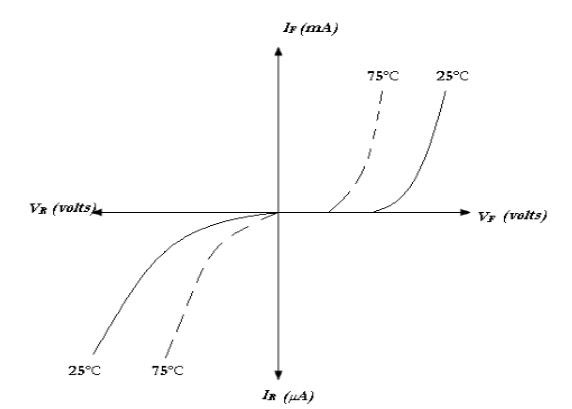We have already discussed that, the current that a PN junction diode can conduct at a given voltage is dependent upon the operating temperature. An increased temperature will result in a large number of broken covalent bonds increasing the large number of majority and minority carriers. This amounts to a diode current larger than its previous diode current. The above phenomenon applies both to forward and reverse current.

The effect of increased temperature on the characteristics curve of a PN junction diode is as shown in above figure. It may be noted that the forward characteristics shifts upwards with increase in temperature. On the other hand, the reverse characteristics shifts downwards with the increase in temperature.
